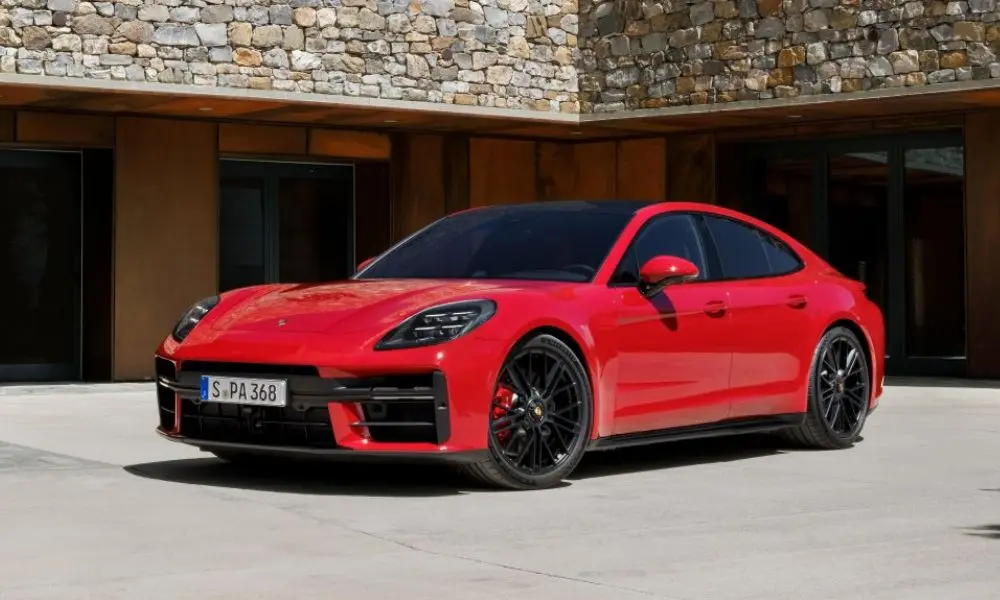Modern car design walks a tightrope between aesthetics and functionality. One of the most striking trends in the past decade is the increasing popularity of sloped rooflines—especially in sedans, SUVs, and crossover coupes. These sleek silhouettes cater to the contemporary demand for dynamic, aggressive styling.
They add a dose of sportiness and visual flair to what might otherwise be a bland or boxy car shape. From a showroom standpoint, these vehicles look fast even when parked. But the compromise often made for that sleek appearance is rear headroom—or more specifically, the lack of it.
A sloped rear roofline tapers down as it approaches the trunk or liftgate, reducing the vertical space available for passengers in the back seat. While front occupants remain unaffected, rear passengers—especially taller adults—frequently find themselves slouching or brushing their heads against the headliner.
This issue is particularly pronounced in vehicles that combine high beltlines and smaller windows with the swooping roof elements that further shrink the sense of spaciousness in the rear cabin.
Manufacturers often defend these design choices by citing market trends, stating that buyers prefer style over practicality. And in some cases, that’s true: buyers who rarely carry backseat passengers may prioritize the exterior look over rear-seat comfort.
However, for anyone who frequently travels with family, friends, or taller passengers, this design choice can be more than just an inconvenience—it can be a dealbreaker.
The conflict between form and function becomes glaringly evident when passengers begin ducking their heads to avoid roof contact or when child seats must be awkwardly installed under a descending roofline.
This article explores ten vehicles across brands, styles, and segments that are particularly guilty of sacrificing rear headroom for visual appeal.
These cars may offer spirited performance, luxurious features, or futuristic tech, but they all have one thing in common: rear passengers won’t be sitting tall. Whether you’re a tall rider or someone shopping for a family car, these are the models to think twice about if comfort in the back seat matters to you.
Also Read: 8 Cars Where the Fuel Cap Hinge Breaks Frequently
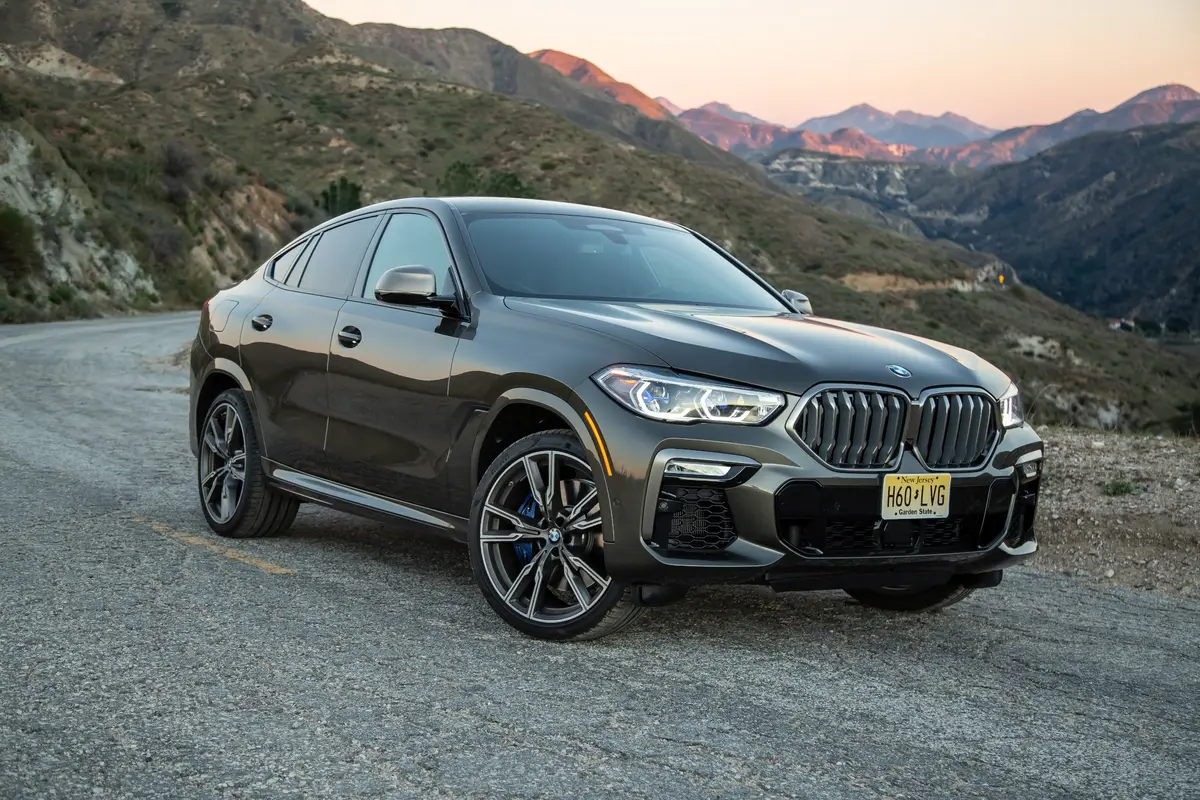
1. BMW X6
The BMW X6 launched the now-popular SUV coupe segment when it first arrived on the market in 2008. Its bold design choice—a sloping rear roofline on an SUV chassis—sparked strong opinions. Many applauded BMW for daring to innovate, while others criticized it for prioritizing style over substance.
As newer generations arrived, BMW refined the formula, but the core shape has remained the same. That steep roof drop toward the rear continues to be the X6’s most distinctive—and controversial—trait.
Rear seat headroom is where the aesthetic compromises become obvious. Taller passengers often find themselves grazing the ceiling, especially near the outer edges of the rear bench.
Despite having generous rear legroom, the headroom deficiency gives the back seat a cramped, almost coupe-like atmosphere. For passengers accustomed to traditional upright SUVs, the experience can be disorienting. BMW includes contoured headliners to add a bit more clearance, but it’s more of a patch than a solution.
BMW markets the X6 as a lifestyle vehicle, aimed at buyers who care as much about visual impact as they do about driving performance. And in that sense, the vehicle succeeds. The X6 drives more like a sports sedan than a typical SUV, offering agile handling, potent engine choices, and a high-quality interior.
But these strengths are primarily enjoyed from the front seat. Rear occupants, especially taller adults, are an afterthought in this design equation.
Compared to the BMW X5—its more practical sibling—the X6 trades utility for aesthetics. The X5 offers a more traditional boxy roofline, which translates into far better headroom and cargo capacity.
For families, the X5 remains the go-to choice, while the X6 appeals more to image-conscious professionals or couples without rear passengers in mind. This divergence illustrates how design can dictate market segmentation, even within the same brand.
Ultimately, the X6 is a love-it-or-hate-it kind of car. If you want performance and presence in a bold package and rarely use the rear seats, it might be the perfect choice. But if rear passenger comfort or practicality is important to you, the aggressive roofline quickly becomes a daily annoyance rather than a stylish perk. Consider your lifestyle honestly before you choose flash over function.

2. Mercedes-Benz GLE Coupe
Mercedes-Benz responded to BMW’s X6 with its own coupe-style SUV, the GLE Coupe. Like the X6, it borrows from a more traditionally shaped SUV—namely the standard GLE—and layers a fastback roofline over it to deliver a sleeker, sportier profile.
It’s hard to deny the visual appeal: the GLE Coupe exudes elegance and power from the outside. However, it quickly becomes apparent that this design comes with significant interior compromises, particularly for rear-seat passengers.
Rear headroom is a notable casualty. The roofline begins to dip fairly aggressively just after the rear doors, creating a noticeable curve that limits vertical space for anyone seated in the back. For individuals over six feet tall, this can be an immediate discomfort.
The problem is made worse by the sloped rear door opening, which requires passengers to duck more than usual during entry and exit. Once inside, the limited ceiling height and relatively narrow window openings contribute to a compressed, cave-like feeling.
Despite its interior limitations, Mercedes has equipped the GLE Coupe with plenty of luxury features aimed at offsetting the spatial compromises. Rear seats come with premium upholstery, advanced climate controls, and sometimes even heating, depending on the trim.
However, all these creature comforts struggle to compensate for the basic spatial issue. It’s like putting a chandelier in a tent—beautiful but inherently confined.
The GLE Coupe competes with not just the X6 but also newer entries like the Audi Q8 and Porsche Cayenne Coupe. Among these, the GLE Coupe sits in a middle ground: more luxurious than the BMW in feel, but not as driver-focused as the Porsche.
Unfortunately, it’s also not the most spacious, lagging slightly behind rivals in rear-seat dimensions. This makes the GLE Coupe a vehicle that appeals primarily to buyers who value exterior design and interior tech over outright practicality.
If you’re in the market for a luxury SUV but regularly carry passengers in the back, the standard Mercedes GLE is a far better choice. It retains all the luxury features of the Coupe but with significantly improved rear headroom and cargo versatility. The GLE Coupe, while stunning on the road, is best suited to one or two passengers who rarely need the back row.
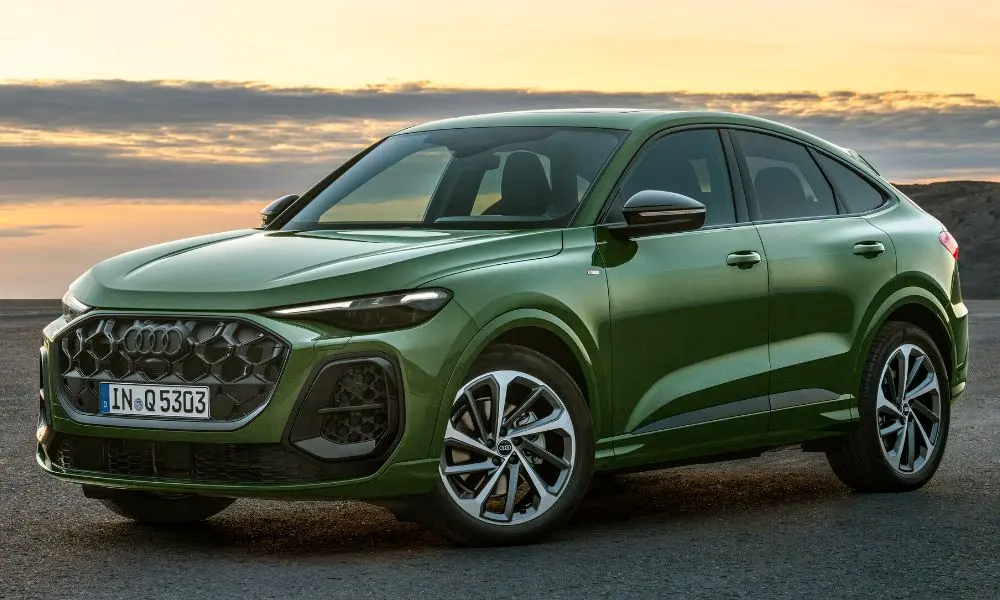
3. Audi Q5 Sportback
Audi’s Q5 Sportback is the brand’s attempt to inject a sense of sportiness and style into one of its best-selling SUVs. While the standard Q5 is known for its comfort and balance, the Sportback variant attempts to enhance the aesthetic by adding a tapered rear roofline.
The result is a more dynamic visual profile, especially from the rear three-quarters. Yet, as with other coupe-SUV designs, the visual excitement doesn’t translate to the same comfort in the second row.
Rear seat headroom takes a clear hit compared to the regular Q5. The roof starts to arc downward just past the midline of the car, curving into a tightly wrapped tailgate. This design squeezes the rear ceiling height significantly, especially near the doors.
Taller passengers will find the headliner uncomfortably close, particularly when seated upright. While Audi does a decent job of sculpting the interior roof for a bit more clearance, it’s still not enough to match the roomier feel of the standard model.
Compounding the issue is the vehicle’s relatively high rear floor, which affects seating posture. Passengers end up sitting with their knees slightly elevated and their heads near the roof—a less-than-ideal combination for comfort.
The window line is also higher and narrower in the Sportback, which reduces natural light and can make the rear cabin feel more enclosed. It’s an aesthetic that looks stunning from the outside but subtracts from usability inside.
Audi tries to bridge the gap with a luxurious interior filled with technology and quality materials. Rear passengers enjoy adjustable air vents, USB ports, and optional seat heating.
These perks enhance the feel of the rear cabin, but again, they don’t solve the basic problem of physical space. It’s a trade-off that may be acceptable for some buyers but frustrating for those who frequently carry adult passengers.
If you’re someone who appreciates clean, contemporary design and only occasionally uses the rear seats, the Q5 Sportback could be an attractive choice.
However, for families or anyone who values full rear-seat usability, the standard Q5 remains the smarter buy. It may lack the coupe’s sleek roofline, but it offers a far more practical and comfortable back seat without compromising Audi’s core strengths.
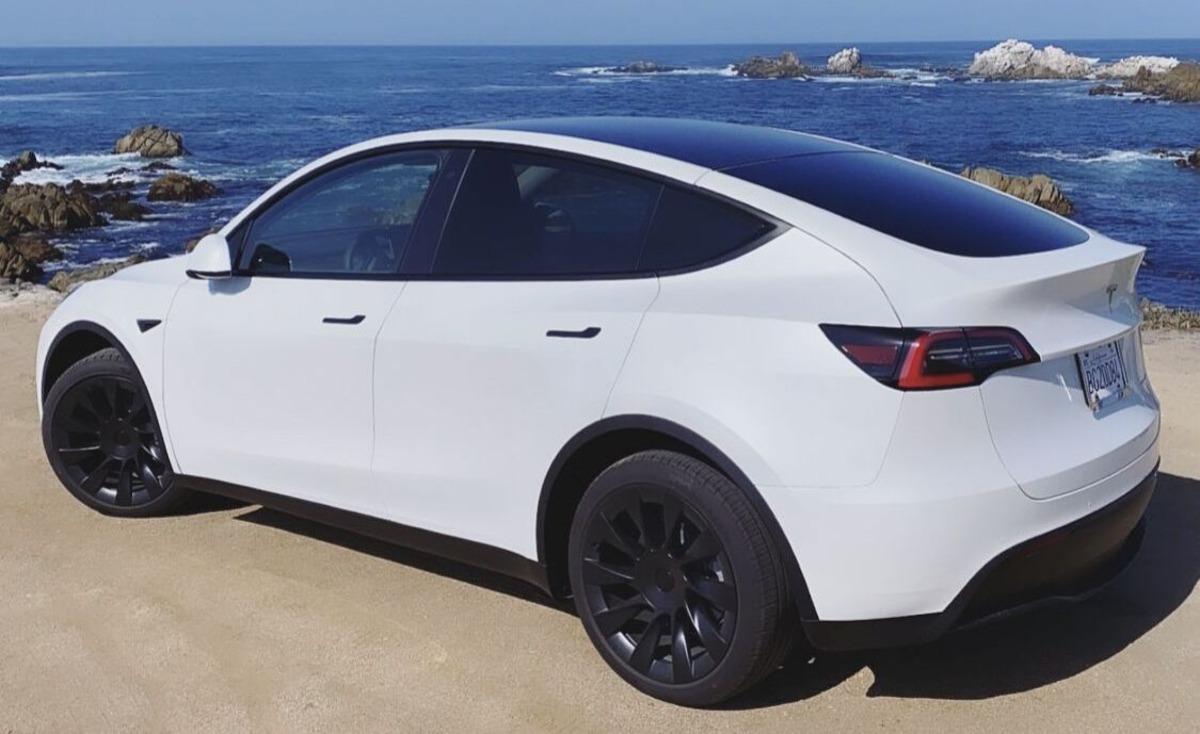
4. Tesla Model Y
The Tesla Model Y promises the utility of an SUV combined with the efficiency of an electric powertrain. Built on the same platform as the Model 3, the Model Y features a sleek, minimalist design that incorporates a sloping glass roof for a futuristic look.
At first glance, the expansive glass creates the illusion of openness, but the actual structure of the roofline descends noticeably at the rear. That’s where the problems begin for rear passengers, particularly taller ones.
While the front occupants enjoy plenty of space and visibility, those in the second row have to deal with a more restricted vertical profile. The glass ceiling curves down gently but significantly, reducing the clearance above the heads of rear-seat passengers.
For anyone above average height, this means either leaning forward or resting your head uncomfortably close to the glass. In some cases, brushing against the ceiling while seated upright is unavoidable.
Tesla has attempted to mitigate this issue by using a panoramic roof that enhances the feeling of space, but the physical limitations remain. The sensation of tightness isn’t immediately visible but becomes apparent during longer journeys or when transporting taller adults.
The optional third-row seating configuration, often advertised as a seven-seat layout, suffers even more. Headroom and legroom are extremely limited in the third row, making it only suitable for small children.
It’s worth noting that many Tesla buyers prioritize technology, environmental impact, and performance over traditional ergonomic benchmarks.
The Model Y excels in range, acceleration, and software innovation. For owners who rarely carry adult passengers in the back, the compromised rear headroom may be a minor concern. However, for families or those regularly transporting people, it’s a compromise that shouldn’t be overlooked.
In the increasingly competitive EV market, other options like the Hyundai Ioniq 5 and Kia EV6 may offer more rear cabin comfort without as dramatic a slope.
While they, too, have some headroom limitations, the Model Y’s fast-descending roof makes it one of the more extreme examples. If practicality is your goal, be cautious before buying into the visual sleekness.
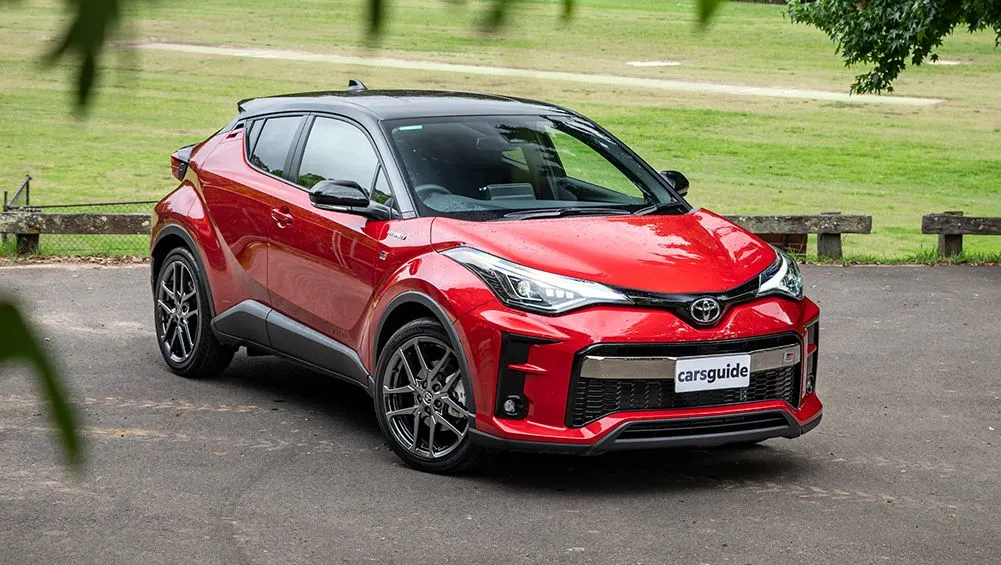
5. Toyota C-HR
The Toyota C-HR is a subcompact crossover that leans heavily on style to stand out in a crowded field. It sports angular bodywork, hidden rear door handles, and a dramatically sloping roofline that instantly catches the eye.
However, this daring design also brings serious compromises, especially when it comes to the rear-seat experience. Chief among these is the tight headroom resulting from the coupe-inspired roofline.
Rear passengers in the C-HR will immediately notice how the ceiling curves downward as it approaches the hatch. The rear doors open into a tight entryway, and once inside, taller individuals may find their heads brushing against the roof, particularly near the C-pillars.
The sensation of enclosure is worsened by the high beltline and small rear windows, which limit light and visibility. It creates a rear cabin that feels more like the back of a 2-door coupe than a compact SUV.
Toyota’s decision to prioritize style is evident throughout the vehicle’s design. From the outside, the C-HR appears sporty and fun, a clear attempt to appeal to younger buyers or those who don’t need full-size SUV functionality.
That said, the rear seats feel almost like an afterthought—usable in a pinch, but far from ideal for regular passengers. It’s a disappointment for anyone expecting typical Toyota practicality.
Compared to rivals like the Honda HR-V, Kia Seltos, or Hyundai Kona, the C-HR falls behind in rear-seat comfort and usability.
Those alternatives offer more traditional upright designs, which yield better vertical space and visibility. While the C-HR has a distinct visual identity, it limits itself by sacrificing key usability metrics that are crucial in the subcompact crossover class.
For urban dwellers or solo drivers, the Toyota C-HR might still hold appeal. It’s easy to park, offers decent fuel economy, and has unique visual charm.
But for buyers who often have back-seat passengers or install car seats, it quickly reveals its limitations. In the battle between design flair and everyday comfort, the C-HR lands too far on the side of form over function.
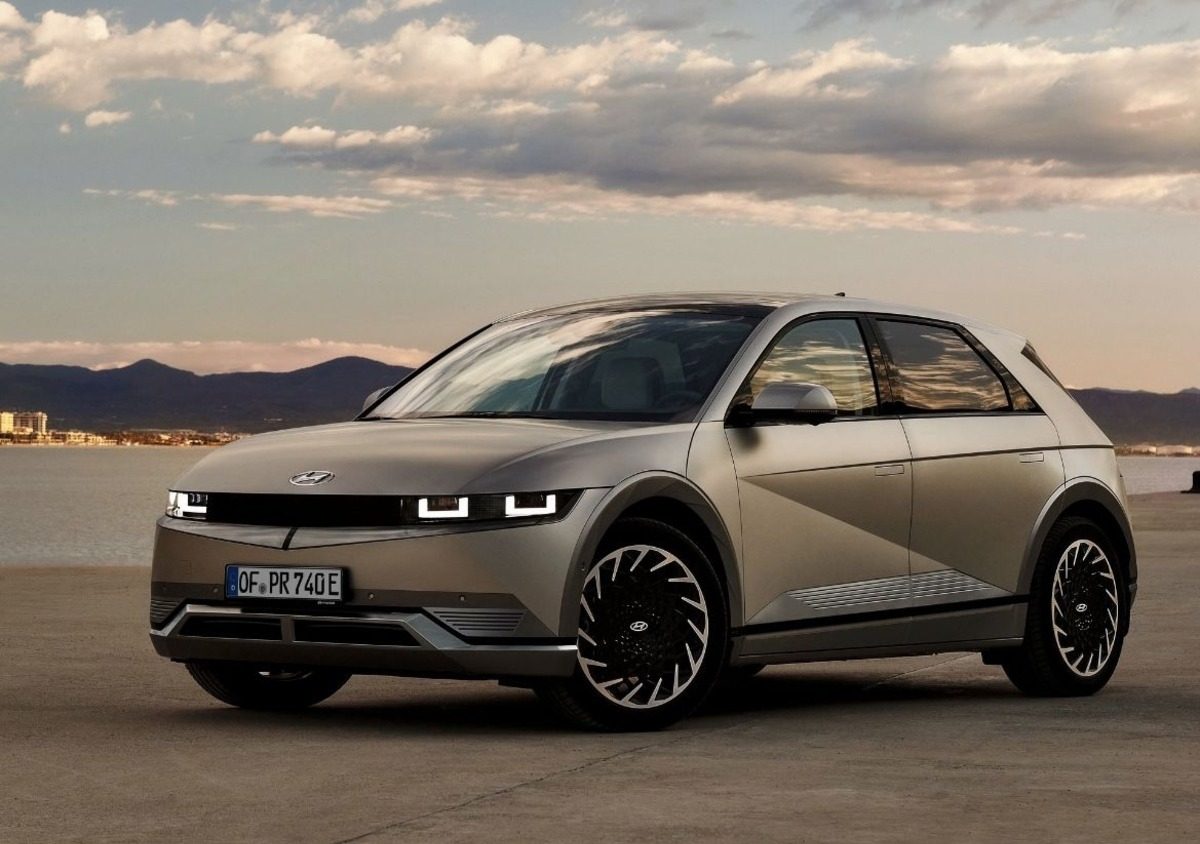
6. Hyundai Ioniq 5
The Hyundai Ioniq 5 is a standout in the electric vehicle market thanks to its bold, retro-futuristic design and spacious, tech-forward cabin.
Built on Hyundai’s dedicated E-GMP platform, the Ioniq 5 boasts a long wheelbase, flat floor, and minimalist interior that screams innovation. However, the vehicle’s sloping roofline—especially as it descends toward the rear—introduces a classic problem seen in many modern EVs: compromised headroom in the back.
The roof starts to taper significantly just past the rear doors, reducing the vertical clearance for second-row occupants. While the flat floor allows for excellent legroom, headroom doesn’t follow suit.
Tall passengers often feel the pinch, especially during longer drives. The high shoulder line and narrow rear windows further contribute to the sense of a closed-in space despite the car’s otherwise airy interior design.
To its credit, Hyundai has made some efforts to contour the headliner and maintain as much usable space as possible. The second-row seats are also adjustable, allowing some flexibility in posture.
But the reality remains: the Ioniq 5’s style-forward silhouette doesn’t fully support a roomy rear cabin. It’s a design compromise that mirrors many of its competitors in the EV segment.
Compared to the Kia EV6 or Tesla Model Y, the Ioniq 5 sits somewhere in the middle in terms of rear headroom. It beats the EV6 in vertical space but falls short of some taller-roofed models like the Ford Mustang Mach-E.
Hyundai likely prioritized aerodynamics and visual drama, both crucial for EV efficiency and brand identity, but at the cost of backseat comfort.
In the end, the Ioniq 5 delivers a unique blend of performance, technology, and design. For most users, especially those with shorter passengers in the back, the headroom issue may be minor.
But for families with tall teenagers or adults using the second row often, it’s a drawback that deserves consideration during the test drive phase.
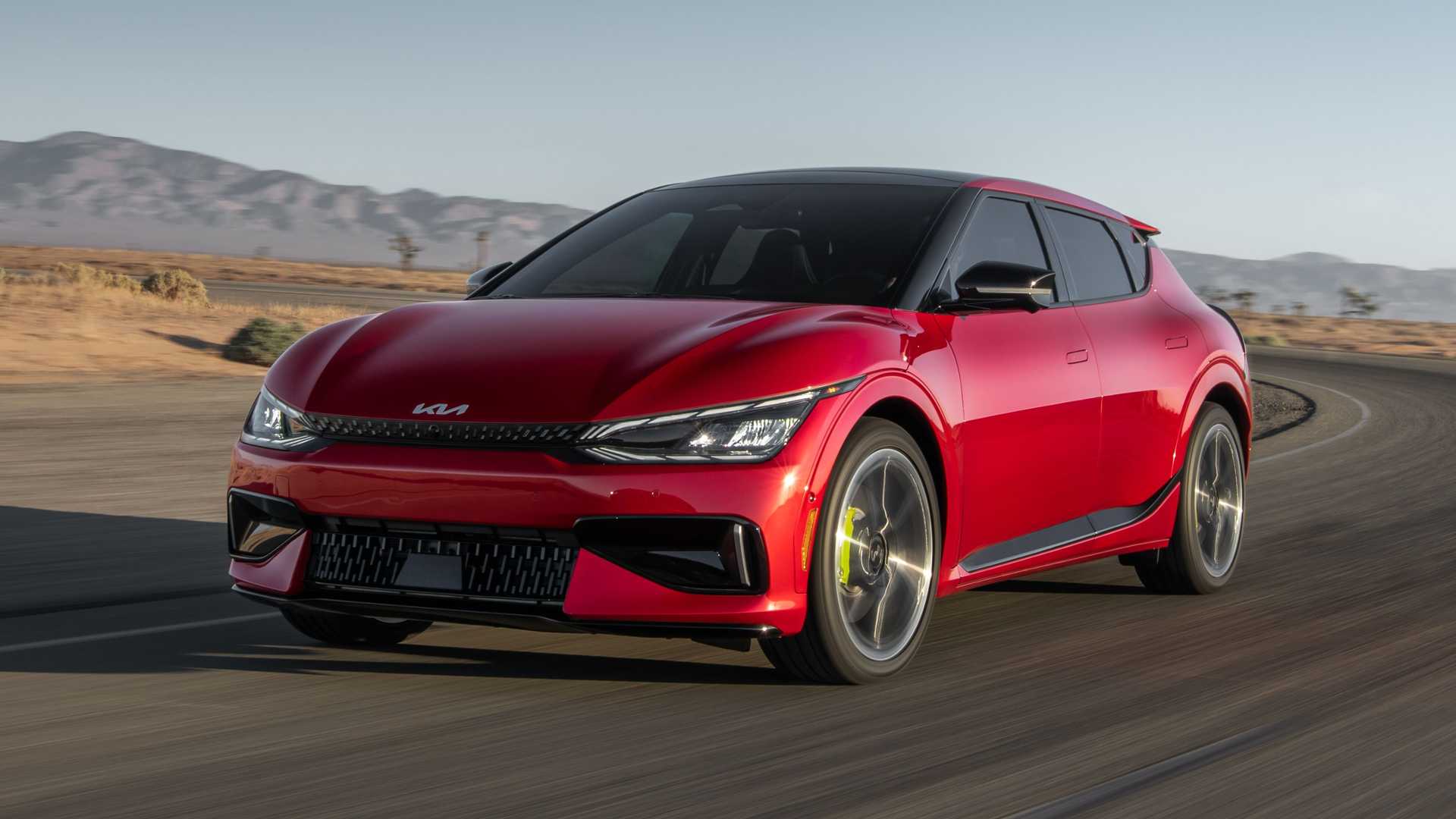
7. Kia EV6
The Kia EV6 is one of the most visually striking electric vehicles on the road today. Its aggressive design, narrow LED lighting, and swooping roofline give it a futuristic, concept-car look that turns heads.
Built on the same E-GMP platform as the Hyundai Ioniq 5, the EV6 is meant to be the sportier, more performance-oriented sibling. But this commitment to styling results in a sharply descending roofline that significantly reduces rear headroom.
Inside the EV6, the first impression is sleek and premium. The interior is driver-focused and minimal, with high-quality materials and generous legroom. But step into the rear seat and the story changes.
While there’s enough legroom thanks to the long wheelbase, the low roof causes taller passengers to duck during entry and slouch once seated. The curvature of the headliner becomes noticeable after just a few minutes, especially near the door sills.
Kia clearly targeted the EV6 at younger, urban drivers who value aesthetics and tech. Its performance versions, like the GT model, even rival sports sedans in acceleration and handling.
However, those strengths don’t extend to the passenger experience in the back. The sloped roof doesn’t just affect headroom—it also cuts into rear visibility and makes the cabin feel tighter than it actually is.
Compared to the Ioniq 5, the EV6 is more visually dynamic but slightly less practical. It also falls behind models like the Volkswagen ID.4, which offers a more upright shape and better rear passenger accommodations. Even among EVs, the EV6 is one of the more extreme examples of style over comfort in the second row.
The EV6 is still an excellent car for those who prioritize design, tech, and performance. But families or buyers who frequently have rear-seat passengers should approach with caution. Its tight rear headroom may not seem like a major issue in the showroom, but over time, it can become a recurring discomfort, especially for taller riders.

8. Porsche Panamera
The Porsche Panamera was Porsche’s bold attempt to blend the thrill of a sports car with the practicality of a four-door sedan. Over the years, it has evolved to become more elegant and better-proportioned, but one thing has remained consistent: its sloping fastback roofline.
While this design element enhances the Panamera’s visual appeal, it also limits the functionality of the rear seating area, particularly for headroom.
The interior of the Panamera is luxurious and sporty, with high-end materials and impeccable build quality. Rear passengers are often treated to individual seating, advanced climate controls, and even touchscreen options, depending on the trim. But the sharply raked rear profile eats into available vertical space.
Taller adults will find that their heads come uncomfortably close to the roof, especially near the rear window line where the slope is most aggressive.
For a car that competes with full-size executive sedans like the BMW 7 Series or Mercedes S-Class, the Panamera’s rear comfort falls short in this one area.
Those rivals, with their more traditional three-box sedan profiles, offer better accommodation in the back. Porsche has chosen to prioritize styling and aerodynamics—important for performance—but that has cost it in pure interior volume.
The Sport Turismo variant offers a bit more vertical space, thanks to a slightly taller roofline in the back. However, it’s still no match for a true wagon or upright sedan in terms of headroom. This makes the Panamera a car that is optimized for drivers and front passengers, but only partially successful as a chauffeur-driven luxury vehicle.
For buyers who want Porsche dynamics in a more usable format, the Cayenne SUV or the Taycan Cross Turismo may offer better all-around comfort. The Panamera remains a brilliant blend of sport and luxury, but it demands compromise from anyone sitting behind the B-pillar.
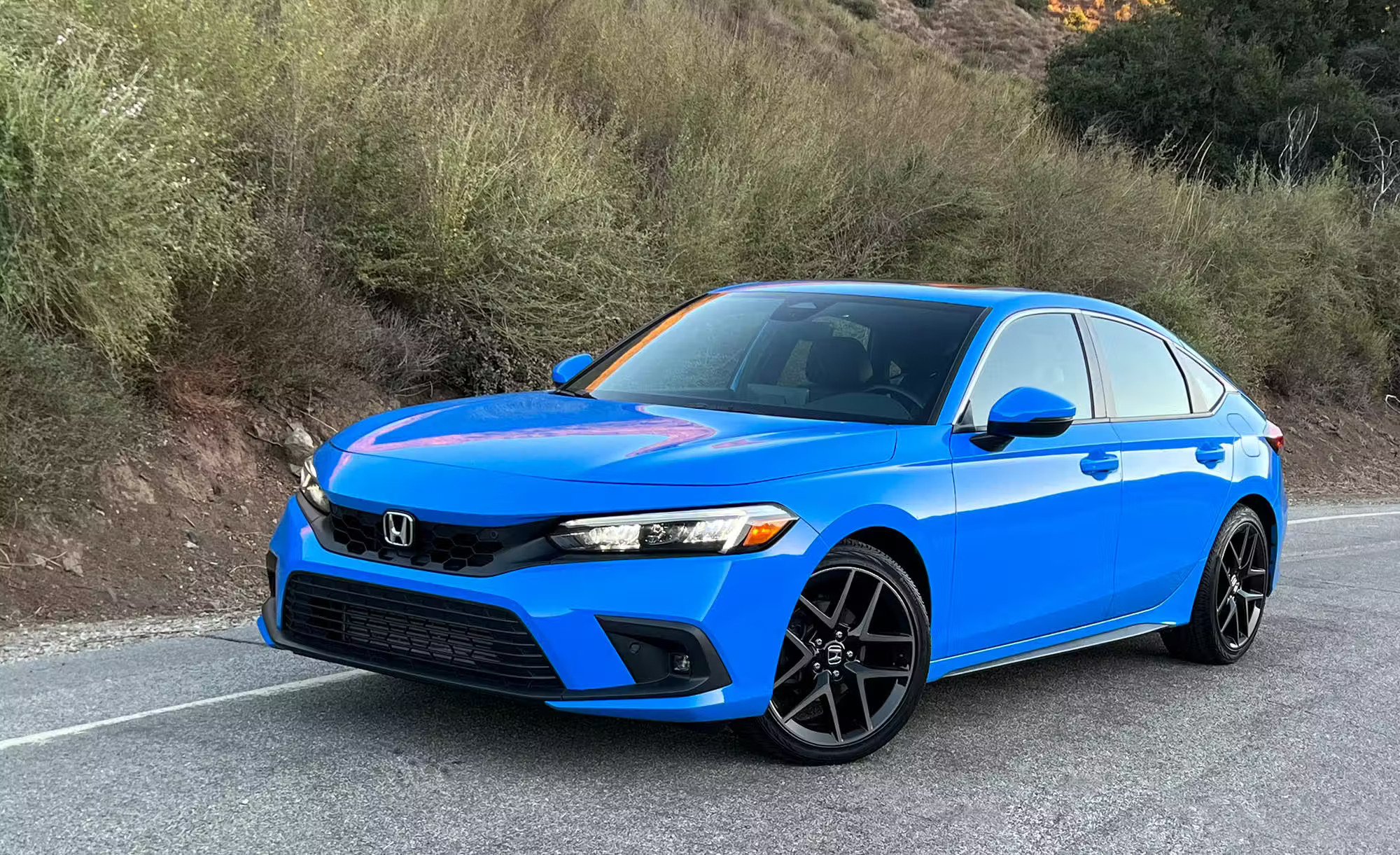
9. Honda Civic Hatchback (11th Gen)
The 11th-generation Honda Civic Hatchback builds on a long legacy of reliable, efficient transportation, now dressed in a more mature, European-inspired design.
The roofline flows gently from front to back, but in pursuit of a sleeker appearance, the hatch version introduces a more tapered rear than the sedan. This subtle but significant change has a real effect on the rear seat headroom.
From the outside, the Civic Hatchback looks cleaner and sportier than its predecessor. The rear is tight and aerodynamic, with a sharp angle between the roof and the rear hatch.
This configuration trims precious inches off the rear headroom. Passengers sitting in the back may not notice it during short trips, but on longer rides, taller individuals will begin to feel the restriction, especially near the rear pillars.
The Civic’s interior remains well-crafted and ergonomic, with great visibility in the front and solid legroom in the back. However, the roofline slant causes rear passengers to recline slightly more to remain comfortable.
Honda has tried to mitigate the effect with smart seat positioning and a lowered floor pan, but the compromise still exists when compared to the sedan variant or the previous generation’s more upright design.
Buyers comparing the hatchback and sedan should consider this difference seriously. While the hatch offers extra cargo versatility and a sportier look, it comes at the expense of headroom and a slightly tighter cabin. The sedan, by contrast, provides a more open and relaxed space for passengers—especially in the back.
Ultimately, the Civic Hatchback is a well-rounded car for those who prioritize a sleek exterior and are willing to accept minor sacrifices inside.
If you’re frequently carrying adults in the rear, the sedan is the more accommodating option. But for solo drivers or those who only use the rear seats occasionally, the hatchback’s limitations may be acceptable.
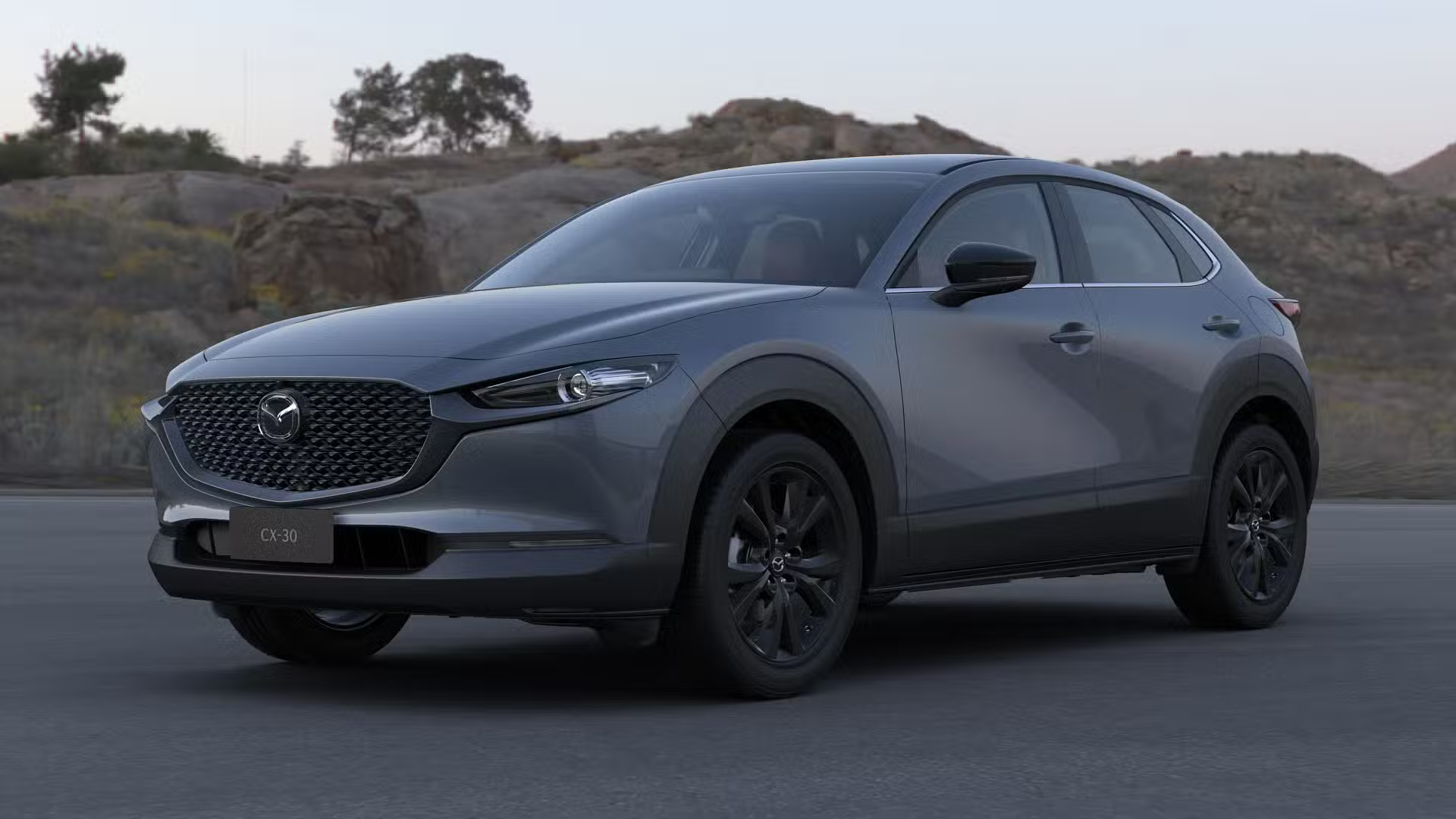
10. Mazda CX-30
Mazda’s CX-30 is a prime example of how the company blends premium design with value-oriented pricing. It sits between the CX-3 and CX-5 in Mazda’s lineup and features a coupe-like profile with a sweeping roofline.
The exterior design is beautiful—arguably one of the best in its segment—but that low, elegant roof also compromises headroom for those in the back.
When you step inside, the CX-30 impresses with upscale materials, a clean dashboard layout, and refined driving dynamics. However, rear passengers may notice the difference as soon as they sit down.
The descending rear roofline cuts into overhead space, and taller individuals may find themselves ducking during entry or leaning forward to avoid brushing the ceiling. The curvature is particularly tight near the side edges of the rear bench.
The high beltline and narrow rear windows further exaggerate the feeling of confinement in the second row. While Mazda has padded the headliner and provided a supportive seat design, there’s only so much that can be done with the available dimensions. It’s a clear case of form taking precedence over function.
Compared to competitors like the Subaru Crosstrek or Hyundai Kona, the CX-30 ranks lower in rear seat spaciousness, especially in headroom.
Those other vehicles have more upright designs that prioritize usability, making them better choices for families or those who frequently transport adult passengers. Mazda’s focus on driving pleasure and visual appeal works brilliantly up front but leaves the rear cabin as an afterthought.
If your priority is a refined driving experience and you rarely use the rear seats, the CX-30 is an excellent choice. But if you plan to frequently carry passengers, you may find its beautiful design a daily inconvenience. It’s a classic example of Mazda choosing premium styling cues over maximum space utilization.
Also Read: Why Mechanics in Remote Villages Prefer These Specific Engines
Automotive design is a constant tug-of-war between form and function. The vehicles listed above illustrate how favoring style, particularly in the form of sloped rear rooflines, can negatively affect passenger comfort.
In a market that’s increasingly driven by visual appeal and sporty profiles, these design choices often resonate with buyers at first glance. However, for those who value rear-seat comfort or regularly transport tall passengers, these same design elements can become persistent irritants.
There’s no denying that vehicles like the BMW X6, Mercedes GLE Coupe, and Tesla Model Y have bold, attention-grabbing exteriors. They appeal to drivers who want their car to reflect a dynamic personality and modern sensibility.
Yet, when aesthetics lead to compromised usability, it’s worth questioning whether the balance has tipped too far. Sloped rooflines may improve aerodynamics or visual drama, but they can subtract from a vehicle’s core function: comfortably transporting people.
Ultimately, choosing the right car means aligning your priorities. If backseat comfort ranks high, especially for families or ride-sharing purposes, it may be wise to stick with vehicles that embrace a more traditional roof shape.
Design will always evolve, but the needs of passengers—tall or not—shouldn’t be forgotten in the process. The next time you find yourself ducking to get into a back seat, you’ll know exactly why.

